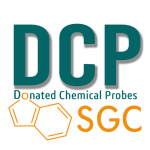MLi-2
Inhibitor of LRRK2
Structure
In Cells
In Model Organisms
Probe MLi-2 is in the process of SERP review.
Please continue to check back for new reviews and commentary.
SERP ratings and comments
SERP Ratings
SERP Comments:
In a mouse model of idiopathic PD, MLi-2 was well-tolerated and showed robust target engagement. However, LRRK2 kinase inhibition in the MitoPark model did not prevent motor dysfunction, α-synuclein pathology or neuron death.
(last updated: 5 Jun 2020 )
SERP Ratings
SERP Comments:
While there are multiple commercially available LRRK inhibitors available, MLi-2 provides another quality chemical probe to help validate this target in cell-based assays.
(last updated: 3 Jul 2020 )
